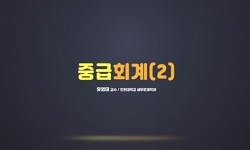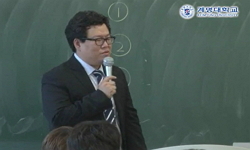This study analyzes Ollimmugwan, which is performed in Byeolsingut on the southern coast. First, the meaning and function of Ollimmugwan were examined in the context of gut rituals, and the main performance elements in the performance of Ollimmugwan w...
http://chineseinput.net/에서 pinyin(병음)방식으로 중국어를 변환할 수 있습니다.
변환된 중국어를 복사하여 사용하시면 됩니다.
- 中文 을 입력하시려면 zhongwen을 입력하시고 space를누르시면됩니다.
- 北京 을 입력하시려면 beijing을 입력하시고 space를 누르시면 됩니다.

남해안별신굿 올림무관의 공연문화적 의미와 특성 연구 = A Study on the Performance Cultural Meaning and Characteristics of Namhaean Byeolsingut Ollimmugwan
한글로보기https://www.riss.kr/link?id=A108729192
-
저자
심민서 (서강대학교)

- 발행기관
- 학술지명
- 권호사항
-
발행연도
2023
-
작성언어
Korean
-
주제어
남해안별신굿 ; 지동굿 ; 굿춤 ; 무속춤 ; 올림무관 ; 신칼무관 ; 부채 ; 손전 ; 허배 ; 동대부신령 ; 지동궤 ; Namhaean Byeolsingut ; Jidonggut ; mugwan ; Ollimmugwan ; Sinkalmugwan ; Jidonggwe ; shamanic dance
-
등재정보
KCI등재
-
자료형태
학술저널
-
수록면
97-140(44쪽)
- DOI식별코드
- 제공처
-
0
상세조회 -
0
다운로드
부가정보
다국어 초록 (Multilingual Abstract)
This study analyzes Ollimmugwan, which is performed in Byeolsingut on the southern coast. First, the meaning and function of Ollimmugwan were examined in the context of gut rituals, and the main performance elements in the performance of Ollimmugwan were analyzed. Through this, it was investigated how the meaning of each performance was affected and manifested. Ollimmugwan is the dance that decorates the beginning of Jidonggut among the Byeolsingut of the South Coast and is the most important dance among the various dances of the Byeolsingut of the South Coast. Jidong-gut is the first gut, to honor Dongdaebu, the main deity of the village, and serves as a starting point for the rites for the dead. In this study, based on Lee Hoon-sang's research on Jidong-gut, I analyzed the character, meaning, and function of Jidong-gut and Ollimmugwan. Considering the nature of Jidong-gut as a shamanistic transformation of Confucian ancestral rites, Ollimmugwan, which decorates the beginning, is a dance that can examine one aspect of the religious and cultural fusion method of Confucianism and shamanic rites. In addition, Ollimmugwan serves to distinguish between before and after Jidonggut, and to provide enough time for rituals to commemorate ancestors for members of the village community. The village community completes the formality of the joint ceremony by offering music and dance as well as alcohol and food to the deity of Dongdaebu. The performance elements of Ollimmugwan are composed of shamanic songs, music, shamanic clothes, shamanic objects, movements, dance, Jidonggwe, and sacrificial offerings. The performance elements of this Ollimmugwan are composed of shamanic songs, music, dances, actions (movements with dynamic proportions), Jidonggwe, and sacrificial offerings. These eight elements are utilized in various ways according to the choreographic composition of Ollimmugwan and the subjects participating in the performance. Above all, it can be seen that Ollimmugwan implies the religious meaning of Jidonggut in that it is a dance that leads Jidonggut, which has the character of a joint ritual for the remembrance of ancestors. In addition, it is the only dance completed through the solidarity of the village community and the performing group in that each member of the village community and performing group must faithfully perform their role.
국문 초록 (Abstract)
본 연구는 남해안별신굿에서 연행되는 올림무관을 현장 연행의 관점에서 분석한 것이다. 먼저 굿 의례의 맥락에서 올림무관의 의미와 기능을 살펴보고, 올림무관 연행에 있어 주요한 연행 ...
본 연구는 남해안별신굿에서 연행되는 올림무관을 현장 연행의 관점에서 분석한 것이다. 먼저 굿 의례의 맥락에서 올림무관의 의미와 기능을 살펴보고, 올림무관 연행에 있어 주요한 연행 요소들을 분석하여 각 연행 구간에서 어떠한 의미로 작용하고 발현되는가에 대해 알아보았다. 올림무관은 남해안별신굿 중 지동굿의 초두(初頭)를 장식하는 무관이자 다양한 남해안별신굿의 무관들 중 가장 핵심이 되는 무관이다. 지동굿은 마을의 주신(主神)인 동대부신령을 처음으로 모시는 굿거리로서 큰굿을 시작하는 기준점이 된다. 필자는 본 연구에서 지동굿에 관한 이훈상의 연구를 기반으로 지동굿과 올림무관의 성격, 의미, 기능에 대해 분석하였다. 지동굿의 성격을 유교식 조상 의례의 무교적 변용이라는 관점에서 볼 때 그 초두를 장식하는 올림무관은 유교와 무속 의례의 종교 문화적 융합 방식의 한 단면을 살필 수 있는 무관이다. 또 올림무관은 지동굿 이전과 이후를 구분 짓는 기능을 하며 마을공동체의 구성원들에게는 조상을 추모할 수 있는 충분한 의례의 시간을 제공하는 역할을 한다. 마을공동체는 동대부신령에게 술과 음식뿐만 아니라 음악과 춤을 올림으로써 공동제의의 격식을 갖춘다. 이러한 올림무관의 연행 요소는 무가, 무악, 무복, 무구, 행위(비율동적 움직임), 춤사위(율동적 움직임), 지동궤, 제물상으로 이루어진다. 이러한 8가지 요소들은 올림무관의 안무적 구성에 따라, 그리고 연행에 참여하는 주체에 따라서 다양하게 활용되는 양상을 보인다. 무엇보다도 올림무관은 지동굿의 전면에서 의례를 이끌며 지동굿의 의례적 성격과 목적, 의미 등을 함축하여 드러내는 춤이다. 또 마을공동체 및 연행집단을 이루는 구성원 각자가 자신의 역할을 충실히 수행해야만 연행이 가능하다는 점에서 마을공동체와 연행집단의 연대를 통해 완성되는 유일한 춤이라 하겠다.
동일학술지(권/호) 다른 논문
-
- 한국공연문화학회
- 김형근
- 2023
- KCI등재
-
- 한국공연문화학회
- 강인숙
- 2023
- KCI등재
-
- 한국공연문화학회
- 최혜진
- 2023
- KCI등재
-
- 한국공연문화학회
- 정상박
- 2023
- KCI등재




 KCI
KCI KISS
KISS






